What is a Business Plan?
A business plan is a detailed, written description of your future business. A plan written today is the strategic source for the smooth and secured functioning of business in the future. It's not essential for a business plan to be always prolonged, detailed, and formal document; it can also be a short and brief action plan depending upon nature, size, and other requirements as per different cases.
Creation of a Business Plan
Creating business plans beforehand helps to achieve entrepreneurial goals. A clear and concise business plan guides attain personal and financial goals. If the business plan is clear & focused, it can help third parties like banks, investors to invest & assist financially in ones growing business. Following are the necessary steps to be followed by an entrepreneur for creating a successful business plan:
- Organize Information
Organize & arrange all the information. Put the suitable heading for proper context. Holding the vision & plan of the organization under each heading is a useful way of creating a business plan. Prepare the plan by jotting down the matter for these headings:
- Title:
give the title to the plan;
- Summary:
Executive summary for summarizing the vision for the company;
- General Description:
Provide an overview & necessary details about the company;
- Product Or Service:
Give brief information about the product or service provided by the business;
- Operational Plan:
Description of the operational plan about the company. The activity to be operated daily;
- Management:
Give brief details about the management & organization responsible for organizing the business matters;
- Finance:
Finance being one of the most important topics to be discussed for any business irrespective of their size & structure; thus, it finds an important place while making a business plan;
- Executive Summary
The executive summary is a brief detail about the vision of the business. These details shall be in brief & to the point facts about the grand visions of the company rather than day-to-day operations.
- Prepare Drafts
After complete research and decision about the business objectives & plan, the entrepreneur shall put the business plan together with all the research, investigations, analysis, etc., into a comprehensive draft. As the draft is prepared just to jot the briefing of the entire plan, it can be grammarless or not framed in paragraphs or stated in an order. It should be though readable.
- Explain Financial Details
For convincing and attracting huge investors, it is necessary to present clear & transparent financial information of the business. Financial figures, estimates & projection are compelling enough if they consist of the data that is true & honest. Projects are compared with the prevailing industry by the banks & financial institutions providing finance.
- Present the Business:
The entire motive of preparing the business plan is to sale the business and present itself in the best light. The business plan depicts the unique talent & idea of the company. The business plan should be potential enough to sale the business instantly against its competitors. Qualification & commitment is demonstrated in the business plan should be convincing enough to gain the support & trust of investors & customers.
Research & Development (R&D) for the Start-up Business
Doing the necessary homework before starting up the business helps in preparing a suitable business plan as well as it is essential for creating a clear vision for the business:
- Analyze the Potential Market
Start by researching and finding the potential market for the business. Consider the segment of the area whose population requirement matches the product or service of the business. This process involves actual accurate researches, and this stage can't be summed up as mere guesswork. Make the questionnaire list for research such as:
- Is it a viable market for selling our product?
- What is the average age group of the potential customer of these markets are?
- What is the alternate supplier of my product in this market?
- What is the salary group of people?
- What is the living style of the population in a potential market?
- Consider the Size of the Potential Market
Identify the size of the market which the business is willing to serve. Even if the business is serving product of necessity or the product that are very common such as bathing soap, start-up business just can’t put their feet & serve the entire world as their market, though can start with the minor sector of the market and gradually increase or expand the area of their markets.
- Identify the Company's Initial Needs
The initial needs of the business are decided first. Whether an entrepreneur willing to start his start-up or purchasing the already running business, it is feasible to identify the initial needs. All the initial needs & source of acquiring the same shall be listed in the plan. Tangible requirements such as files, folder, computers, and intangible needs such as market research, potential customers, product design, etc.
- Product Sample
Prepare the product sample that is willing to be sold in the potential market. Prepare the checklist for the sampling of products such as:
- What quality is needed?
- What material is required for the production?
- Actual & alternate source of procuring the material?
- Does there is a need to hire an engineer for the structural design of the product?
- What are the safety measurements for products installed?
- Possible Location for the Business
Select & find a suitable location for setting up the business. Find a rented or owned place as per the business need & size. Finding the location depending upon the potential market is a critical step for an entrepreneur. Figure out the estimate of the area required for the business, including space it would need for warehouse, godown, manufacturing area, etc., as per the nature of the business.
- Deciding the Estimated Cost
Make the complete list of all the tangible & non-tangible needs of the start-up along with the estimated fund required. Cost of renting or purchasing the premise, cost of resources, materials, electricity, water, & employees are the fixed cost to be borne by the business irrespective of the fact whether they are a start-up or an old one. Decide necessary sources of a fund such as banks, financial institutions, going public by debenture issue or public issue, etc. These matters are decided to depend upon the level of control.
- Identify Investors
Finally, decide and identify the potential investors for the business. Lenders usually analyze the capital adequacy, collateral conditions & projections to lend them money and make an investment in new ventures. Bank follows certain guidelines such as Risk Management Association before lending the funds for the business.
Types of Business Plans
Following are the different types of business plan depending upon the nature of the business:
- One-Page Business Plan
As the name suggests, it is the quick summary of the entire business on one single page. Business vision & mission are explained in concise and to the point details. These forms of a business plan are a great source of information for outsiders such as customers, investors, etc. The simple format of these business plans is just great for the start-ups who just want to sketch up the entire business service in minimal words.
- Lean Business Plan
Lean business plans are a detailed plan compared to a one-page plan. They hold the financial information of the company along with the vision & mission of the business. Lean business plans are used internally by the management as a tool for making strategic plans for growth & development. These plans skip the details about the overview & history of the company.
- External Business Plan
These are the formal documents prepared for the outsiders. These business plans are prepared for attracting the investors to fund a business, and these documents are used extensively as supporting documents in the loan application. A formal business plan is the extended version of the lean business plan.
Structuring the Business
After the plans are prepared and the vision and mission of the business are ready, the next step is to structure the business using the following key points in mind:
- Define the Purpose of the Company
Business existence will be for no reason if it has no objectives or goals to accomplish. Jot down the needs of the business, potential users of its services, and the reason for doing the business.
- Prepare the Strategy
After establishing the competitive advantages of the business, it has to prepare the best strategy for achieving the targets it has set up to accomplish. Competitive advantage is the features and benefits the product or service your business provides over & above that of the competitor.
- Workforce
Design the amount of workforce that will be required by your business. Get the god idea of the number of people required along with the skills that are needed to get the enterprise running.
- Note down the Practical Issues
Handling the practical issues is different from that of preparing plans on paper. An entrepreneur, as a god leader, shall organize the workforce. Handle the employees’ benefits entitlement, such as pension, salary, bonus, and other amenities.
- Sales and Marketing Efforts
Make all the contacts for sales & marketing and advertising the product of the company. Reach the target customers through marketing campaigns. In simple terms, these efforts are strategies to attract customers.
Frequently Asked Questions
A Formal Business Plan must include basic components such as Review Schedule, summary, responsibilities, duties, practical issues, projection cost, market trends, potential market exposures, opportunities, etc.
The basic components of a Financial Plan are sales forecast, projection about estimated cost, cash flow statements, and balance sheet, etc.
For extracting most of the value, the drafter must make only one-page business plan as they quickly outline the strategies in fewer words; establish practical hurdles to accomplish the goals; prepare the sales forecast & keep the cost budget of current dates; and compare the planned budget with actual results.
The main role and duties are to provide Advice on the strategy used by the business; Develop a plan of action; Implement the plan of action; and Develop Risk Analysis & Mitigation.
Yes, it is a must for a Business to have a Business Plan.
A Business Plan for Startup will require more time than a Business Plan for a well established venture.
Yes, Business Planning is needed for all the levels in an organization.
Contacting Swarit Advisors for Business Planning services would provide you several benefits such as an Expert Team of Professionals; 24*7 Customer Support; Post Monitoring Advice, etc.
The different types of Business Plan are One-page Business Plan, External Business Plan, and Lean Business Plan.
The term “Business Plan” denotes a detailed and written description of the future business.
No, it is not necessary to have a detailed and prolonged business plan. A Business Plan must be according to the nature and size of the business.
Yes, a Business Plan can assist third parties such as banks, investors, etc.
The term “Business Plan Consulting” denotes the process in which an external “third party consultant” is involved to provide strategic advice.
The Key Ingredients of a Business Plan are Business Concept; Marketplace Section; and Financial Section.
Yes, at Swarit Advisors, we provide Customized Business Plans based on the needs of our clients.


